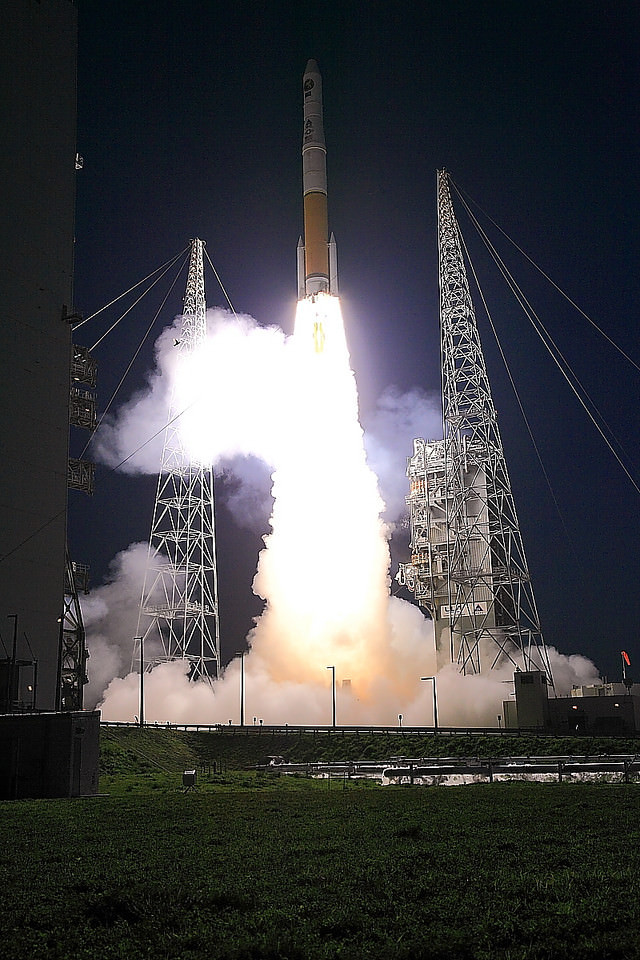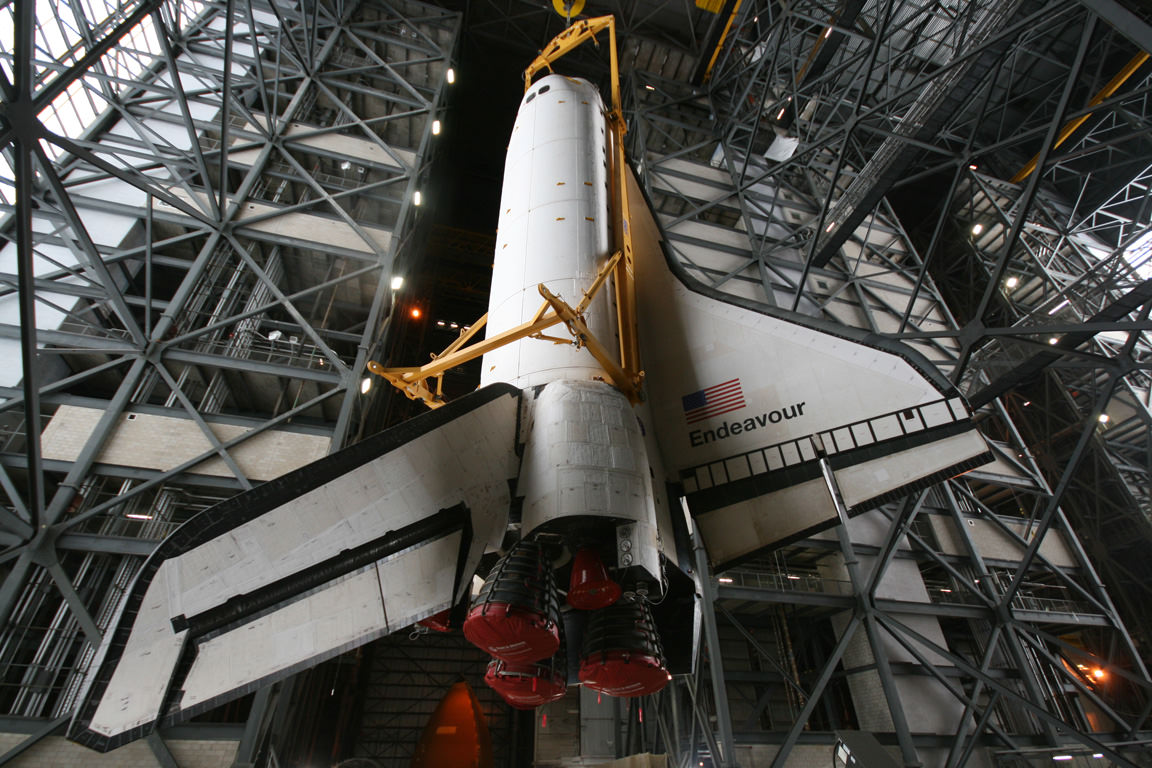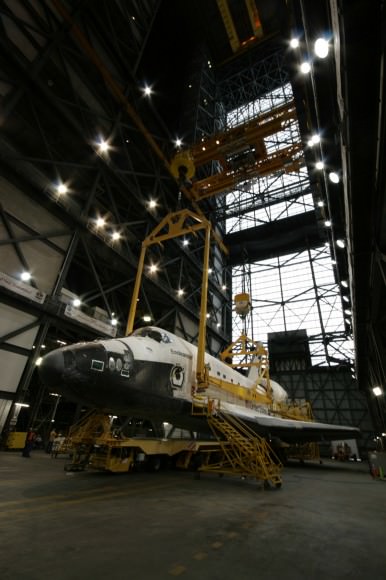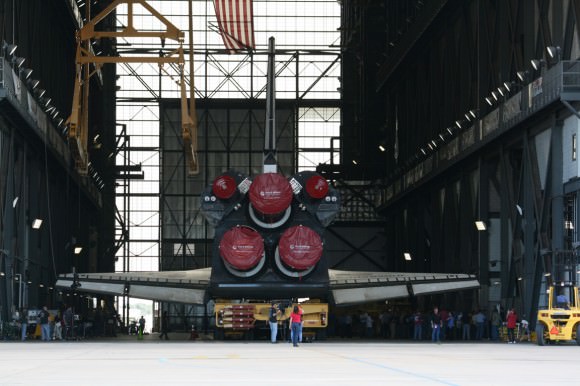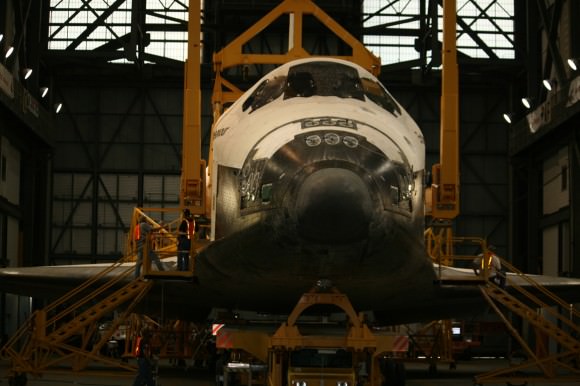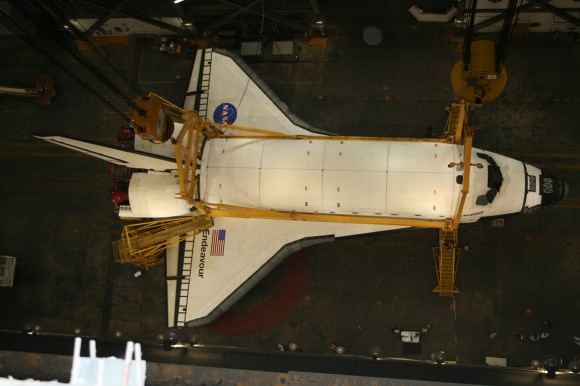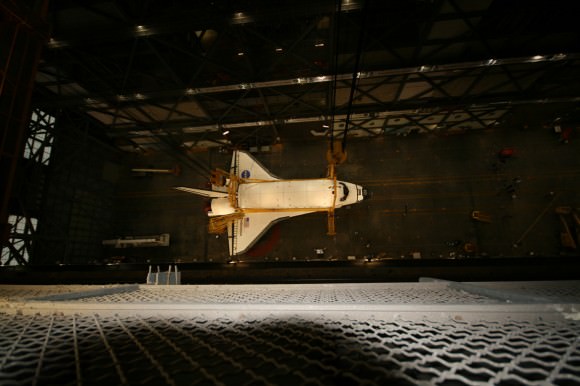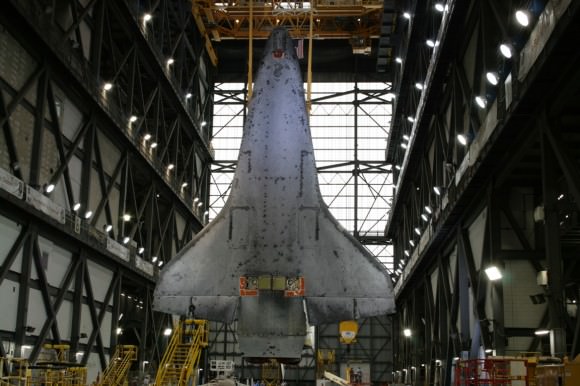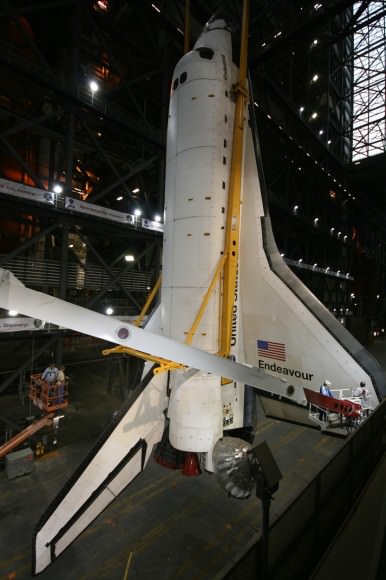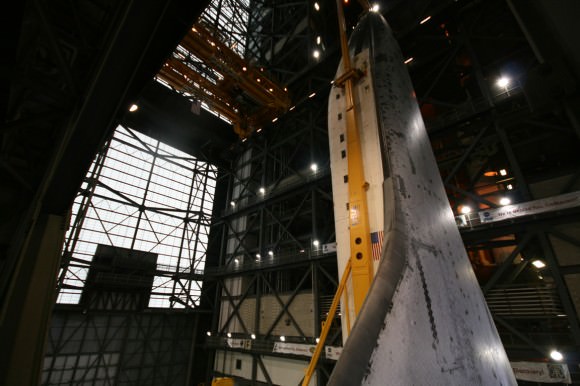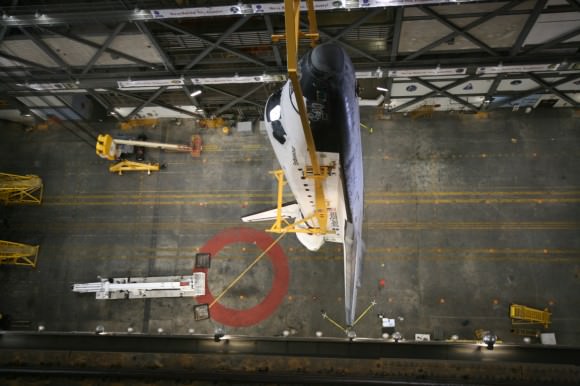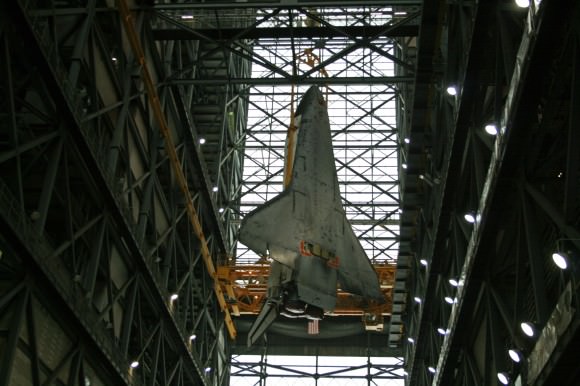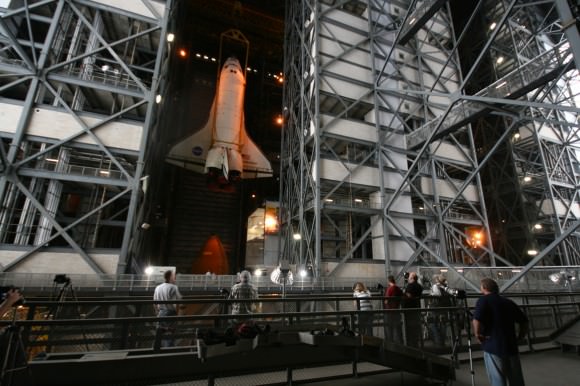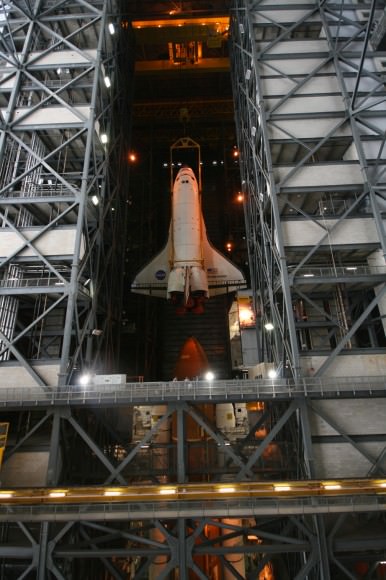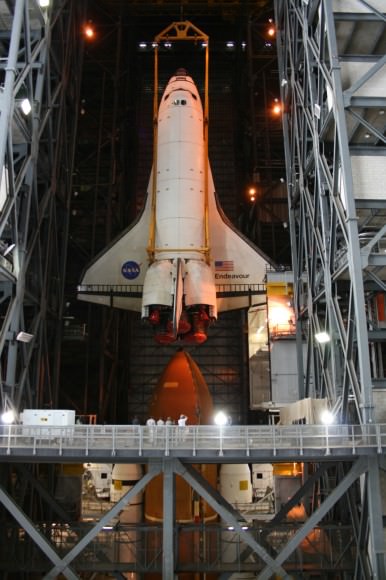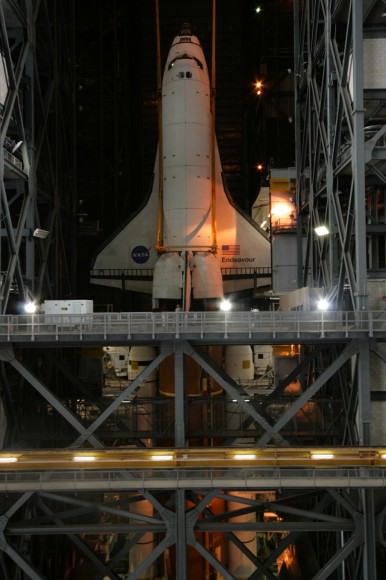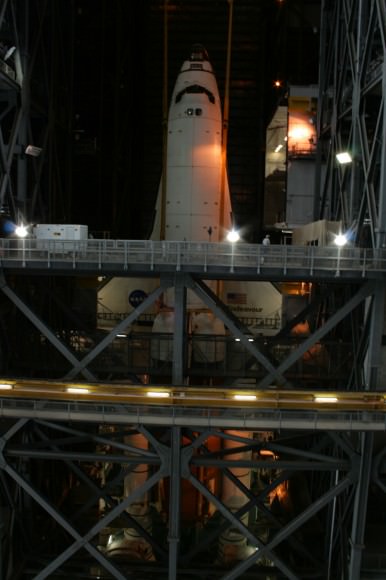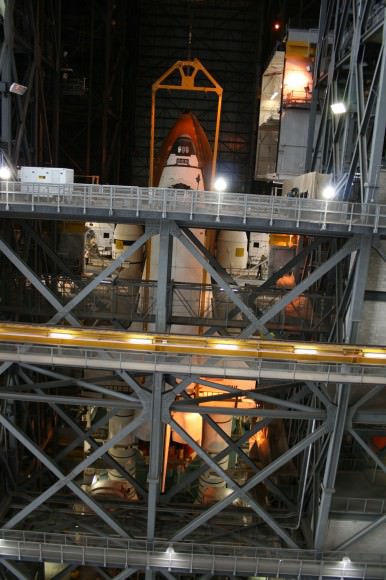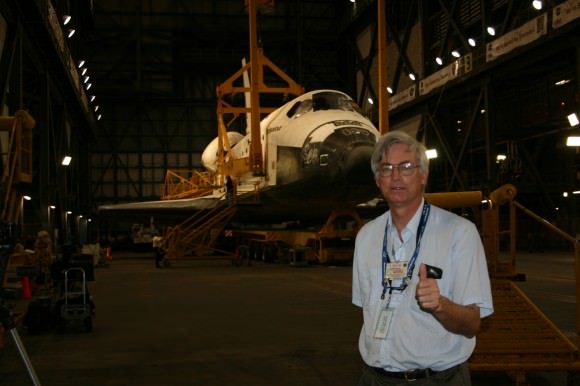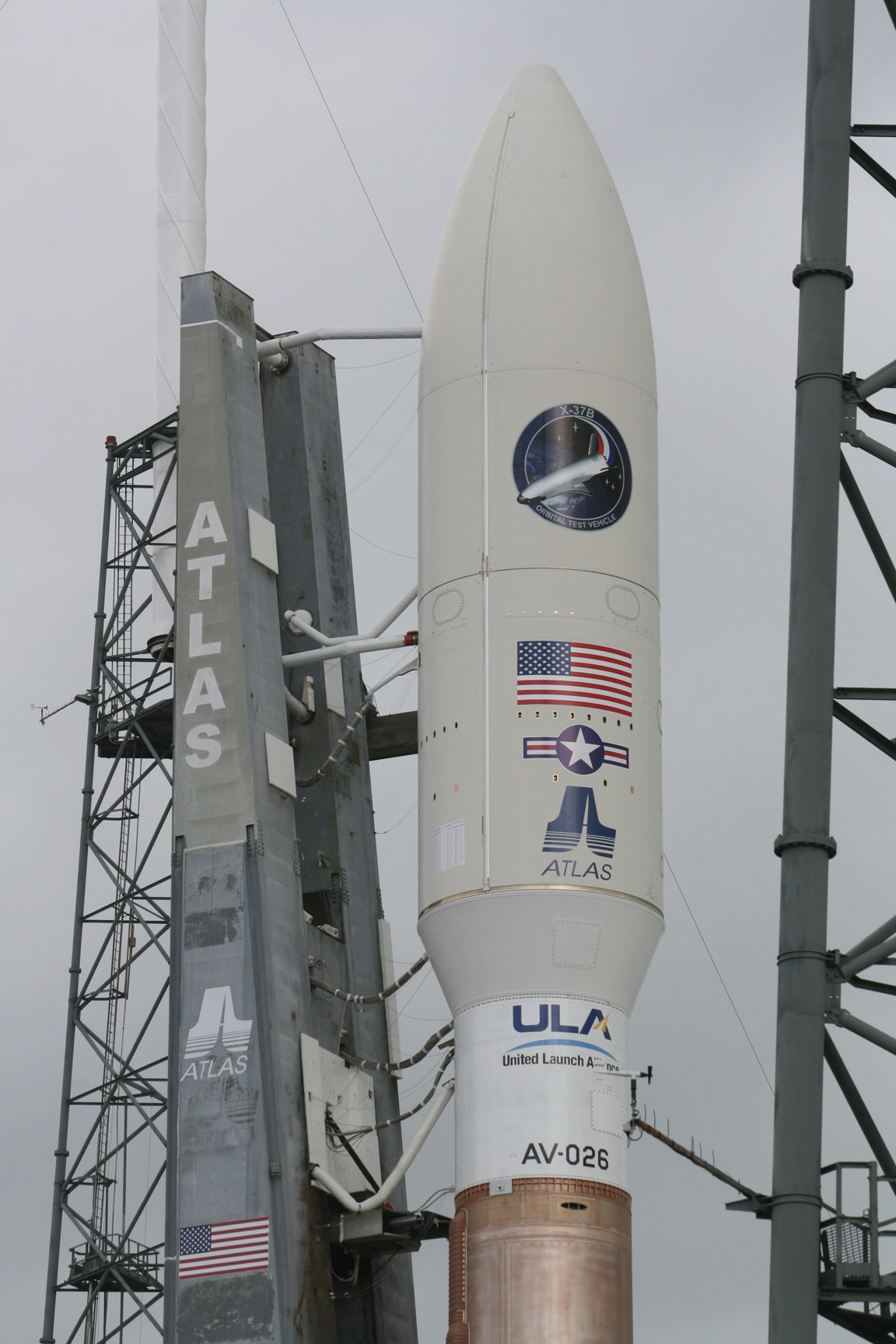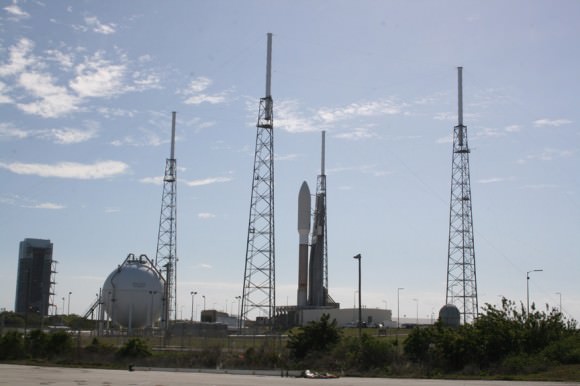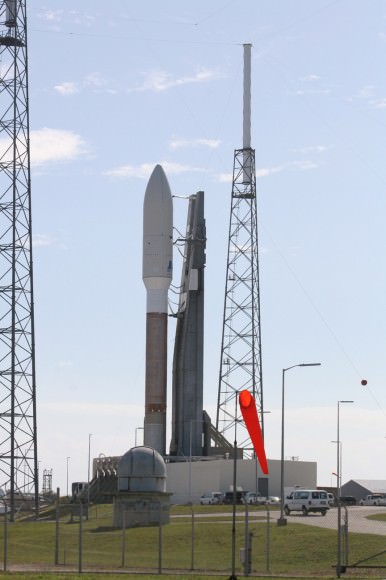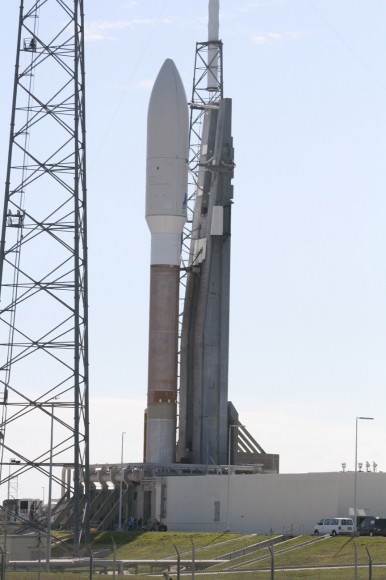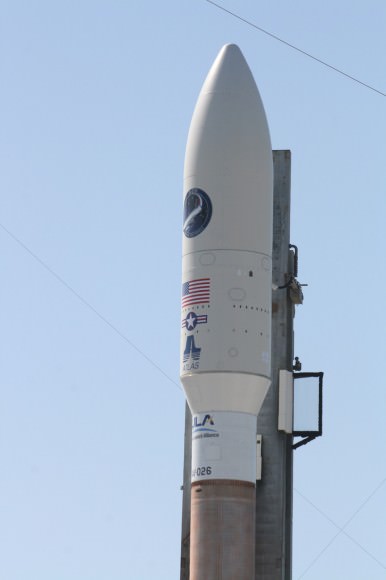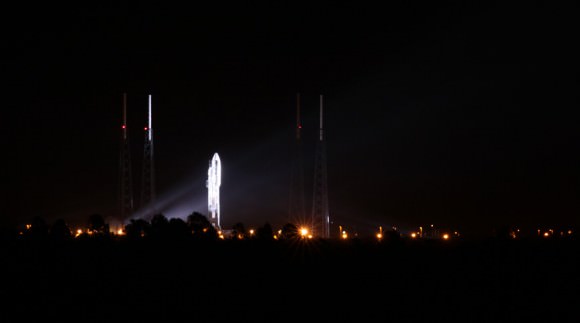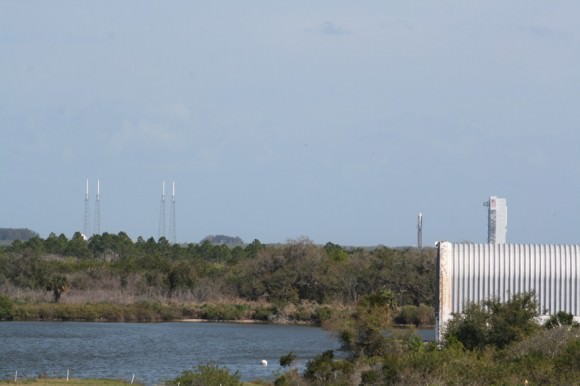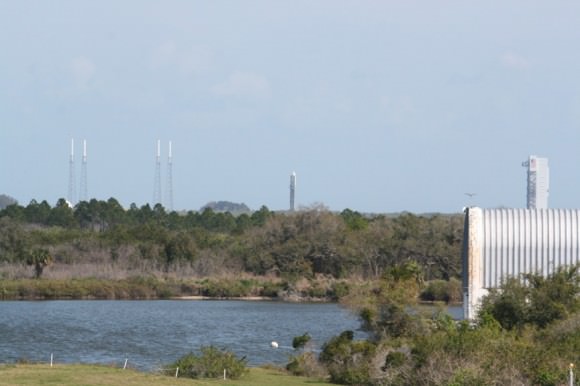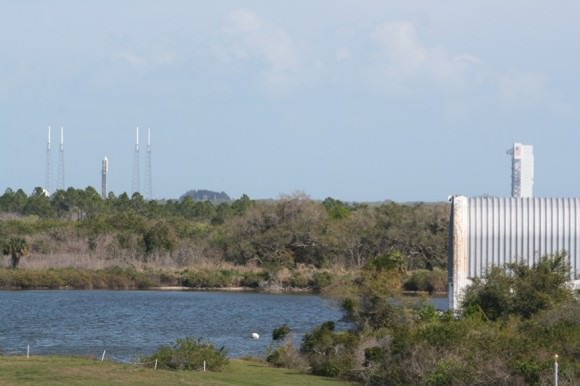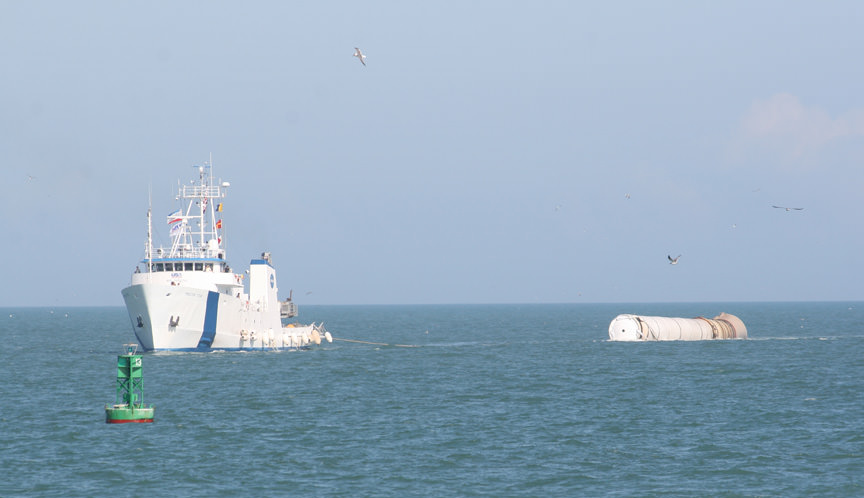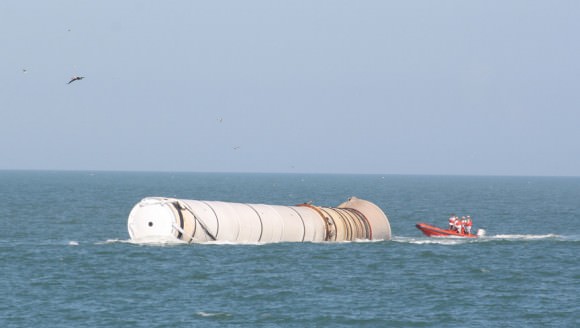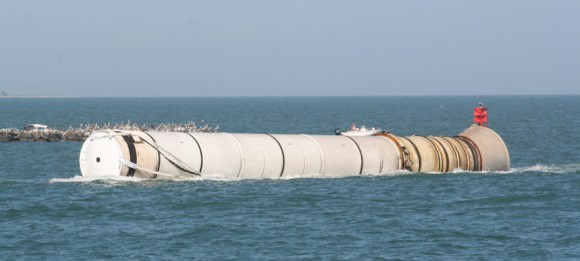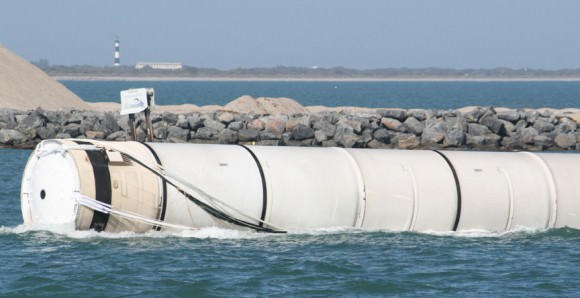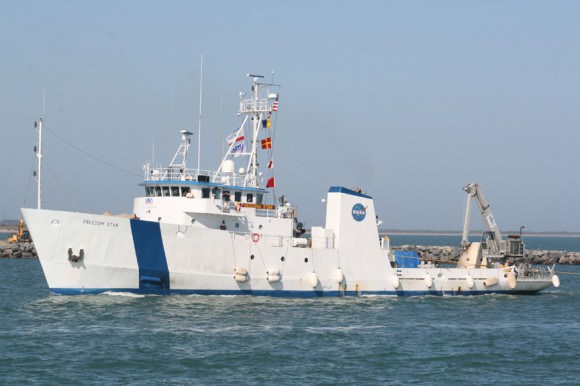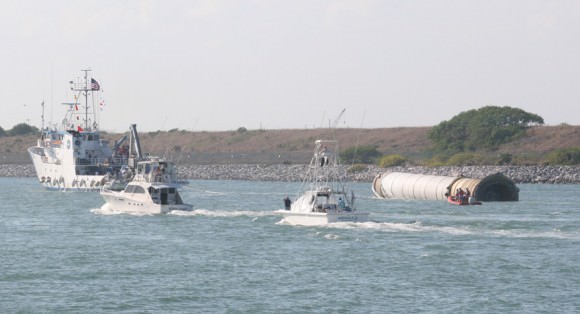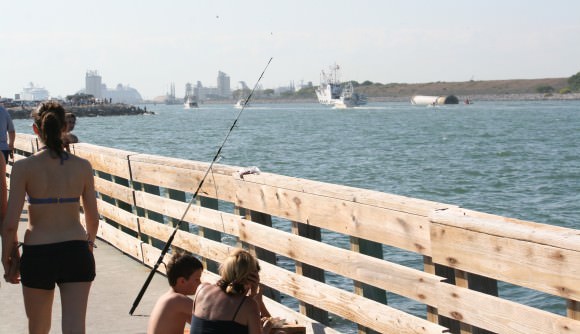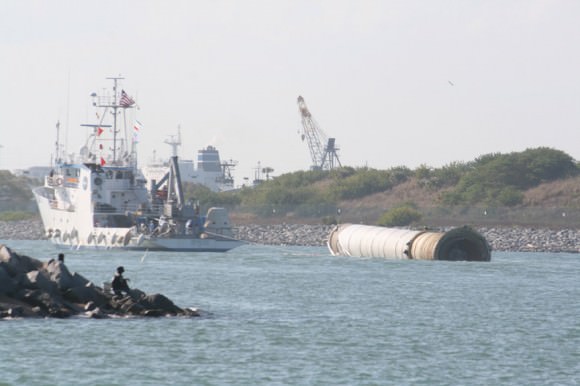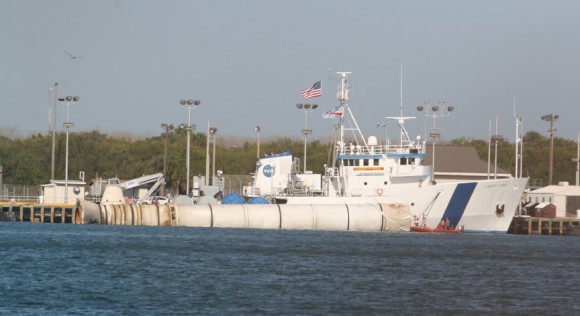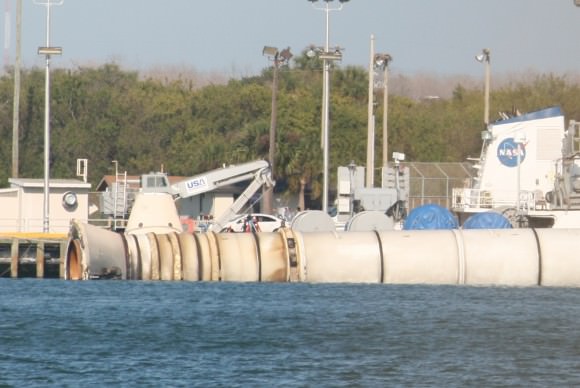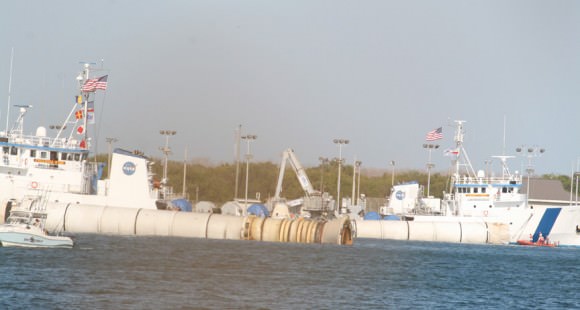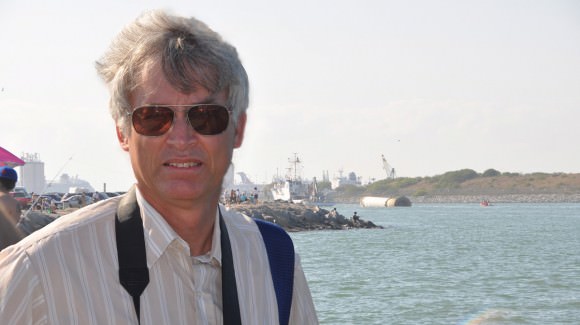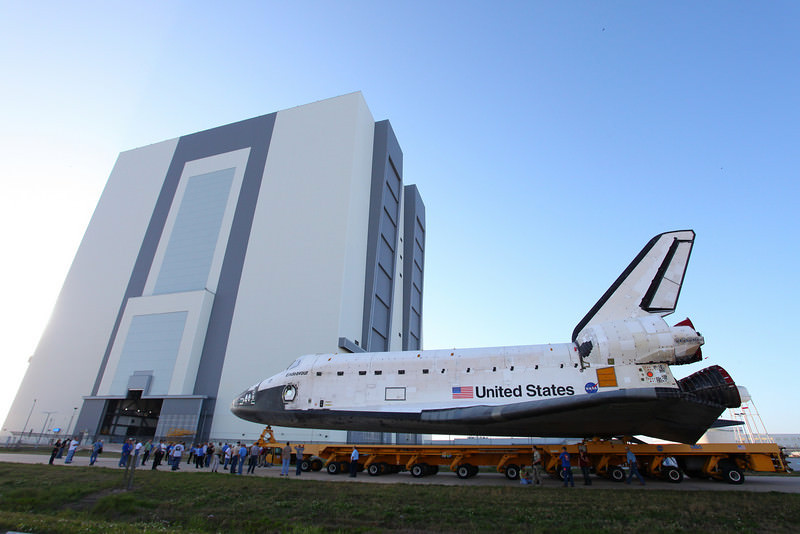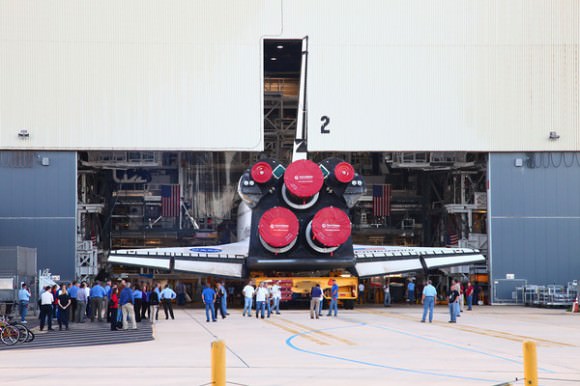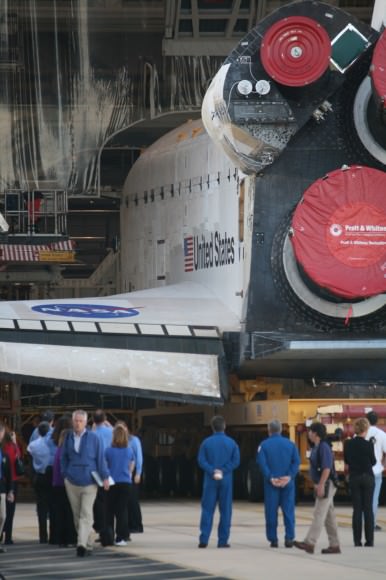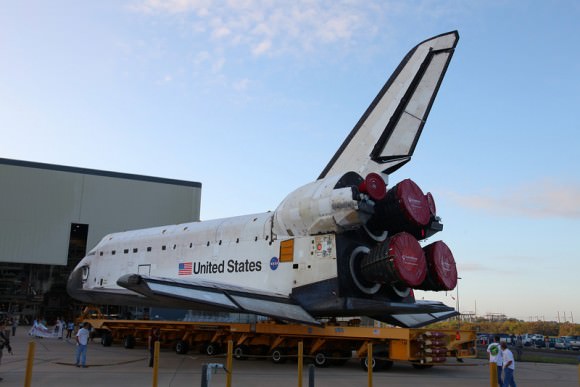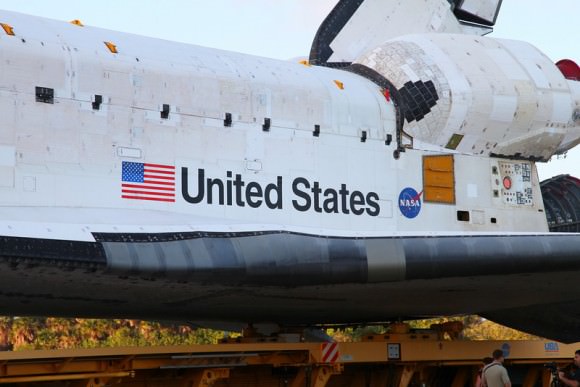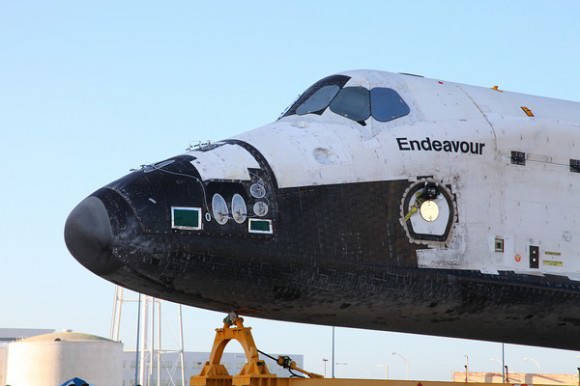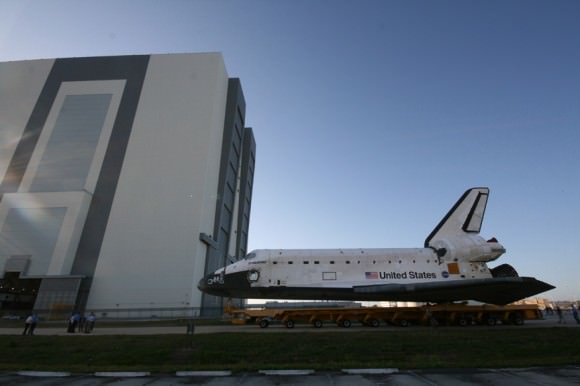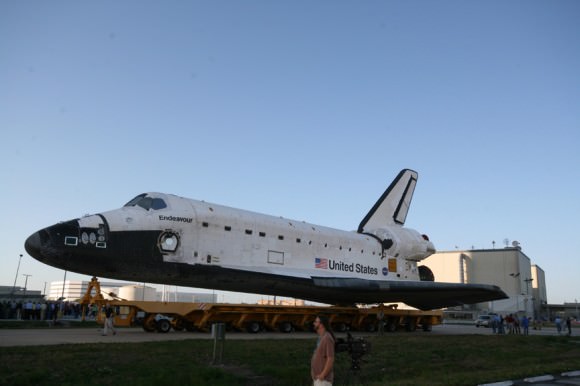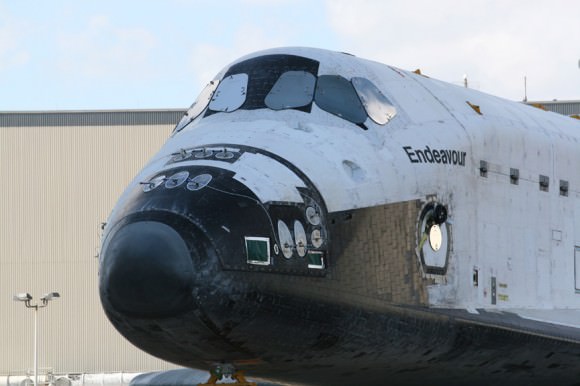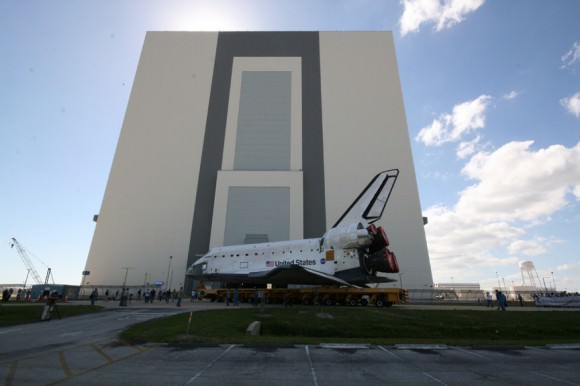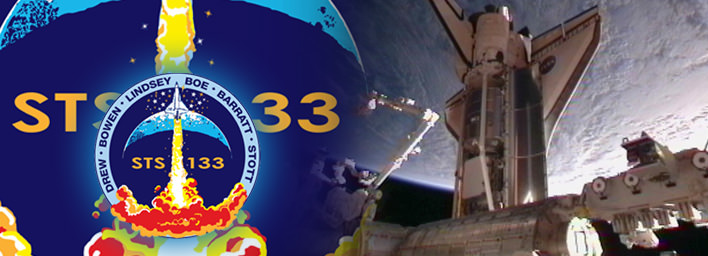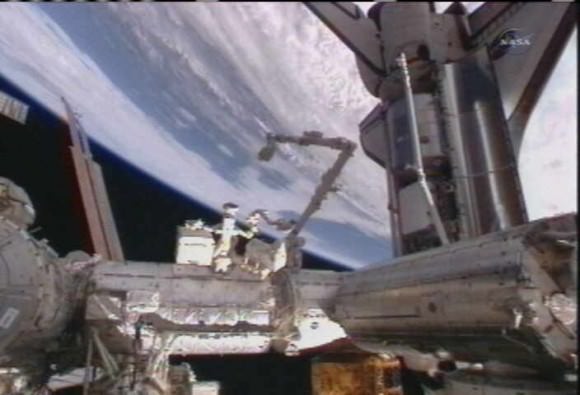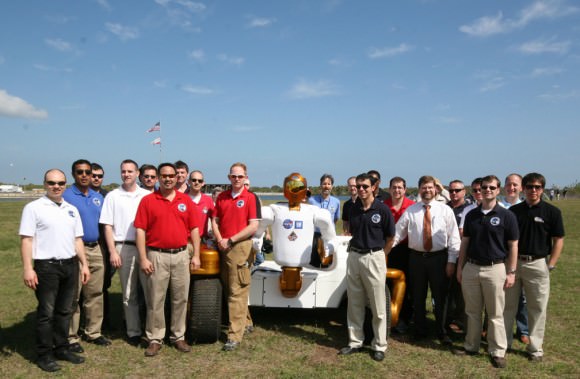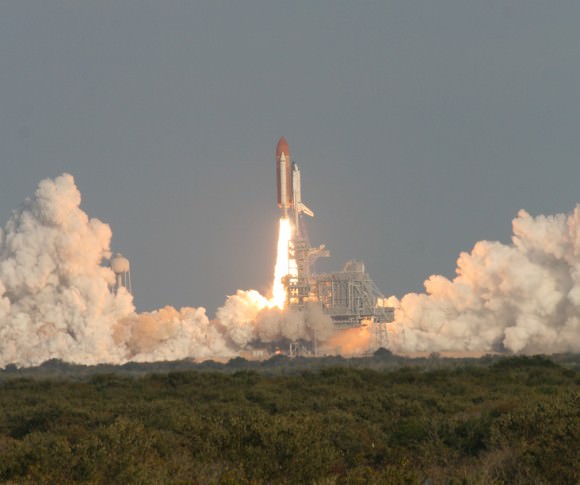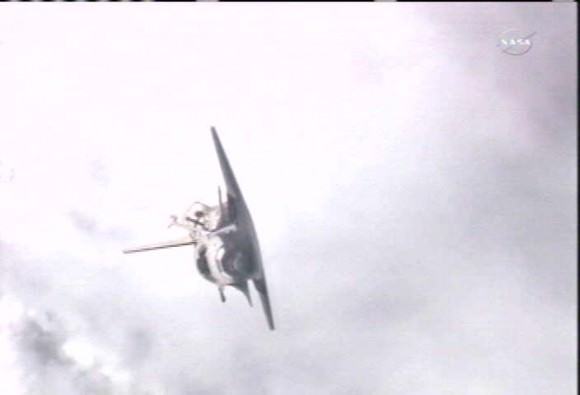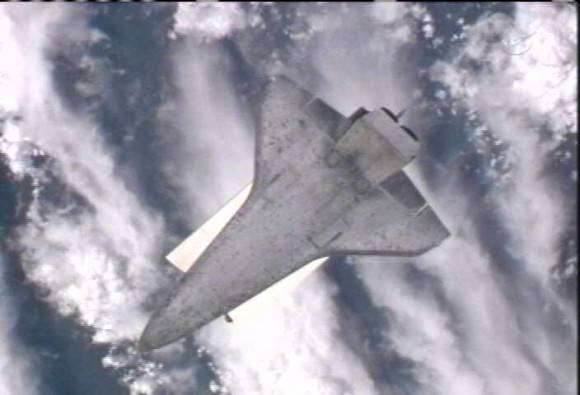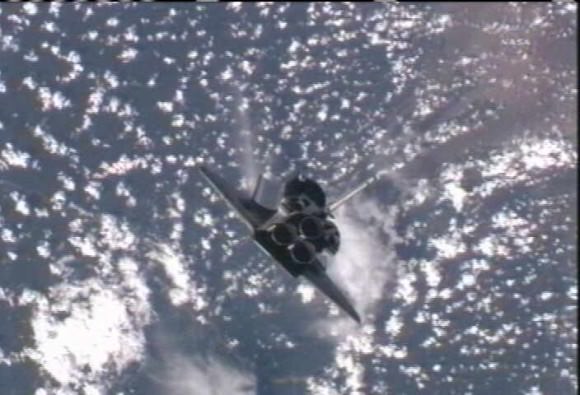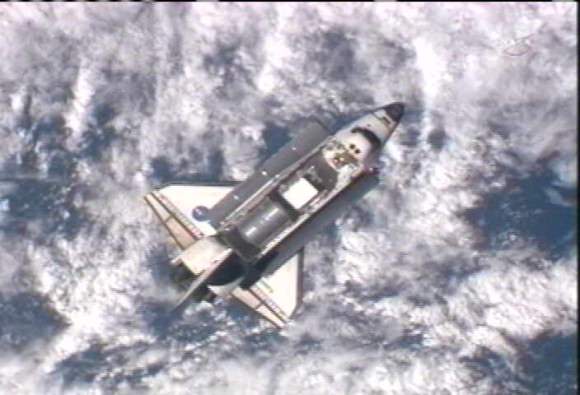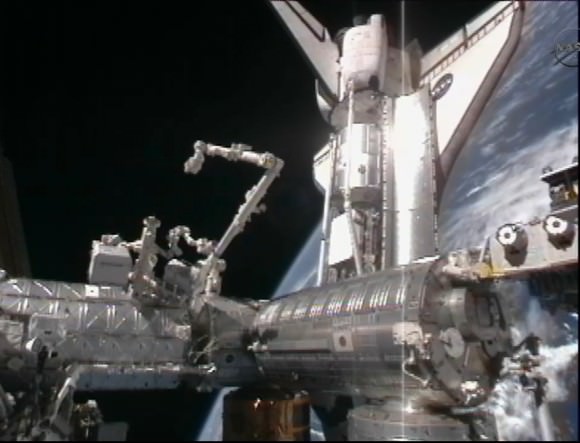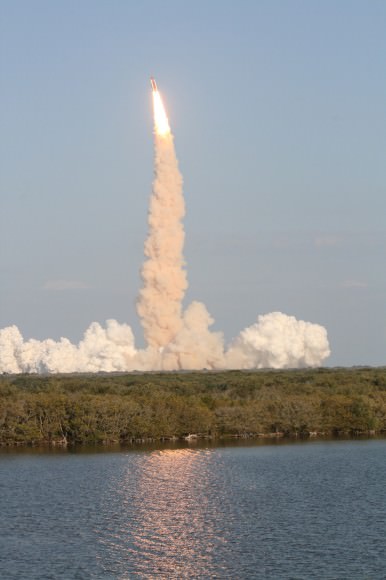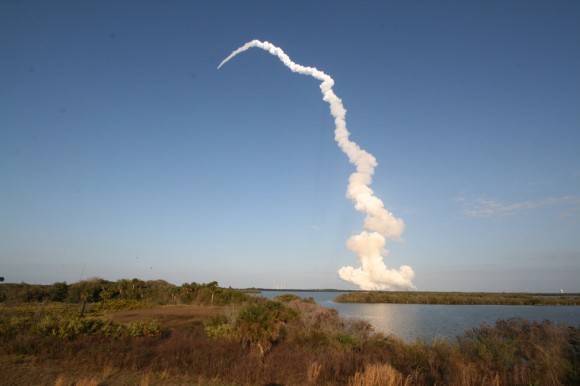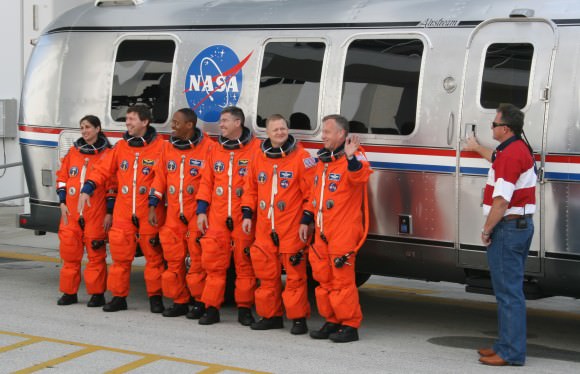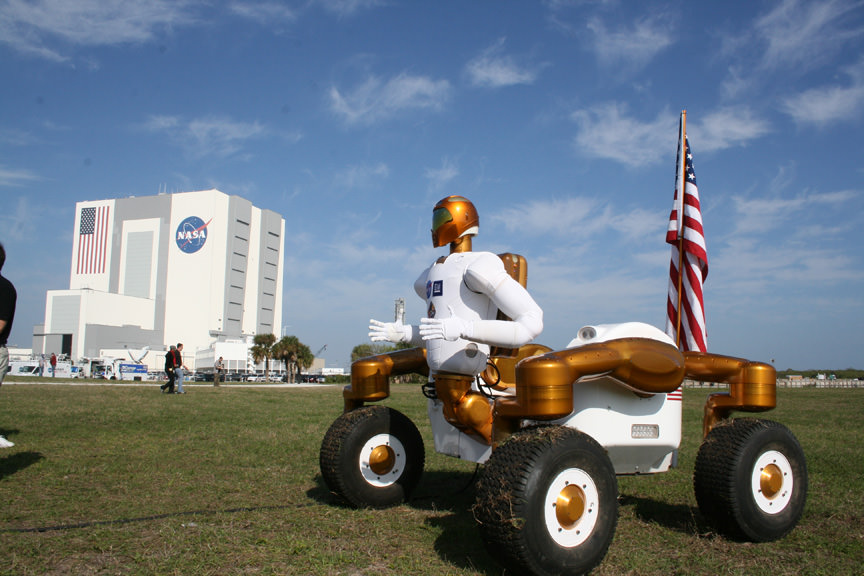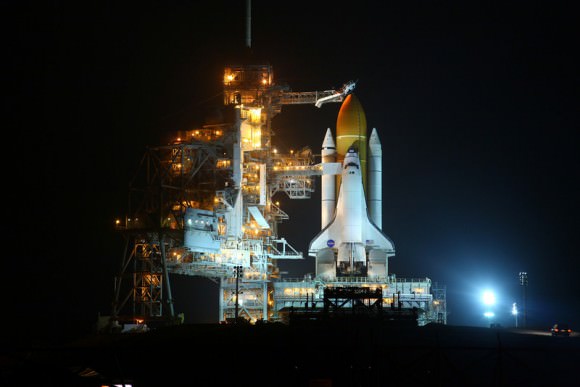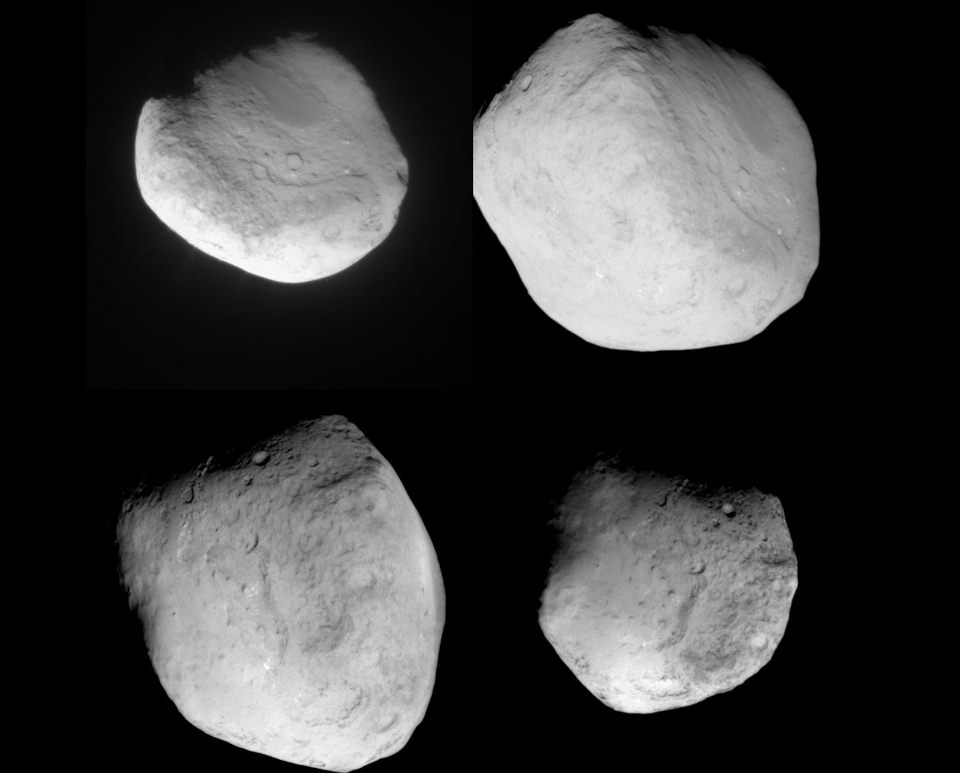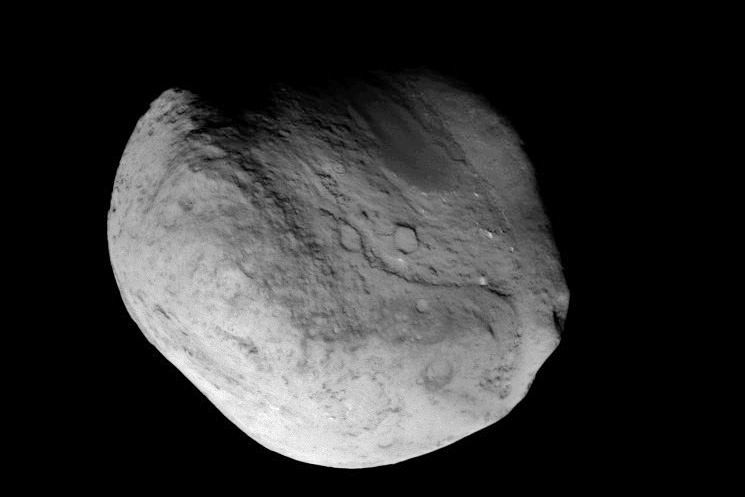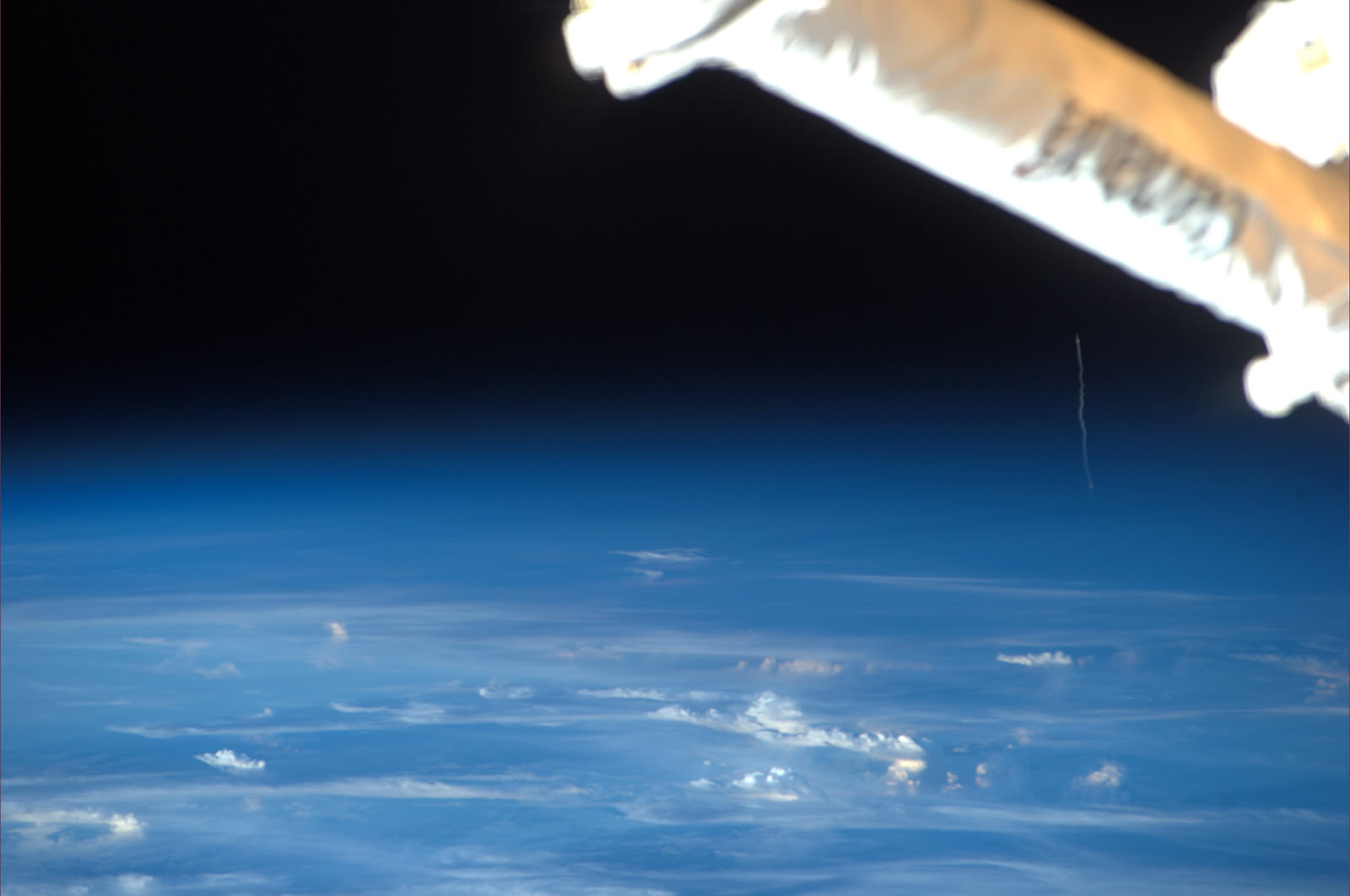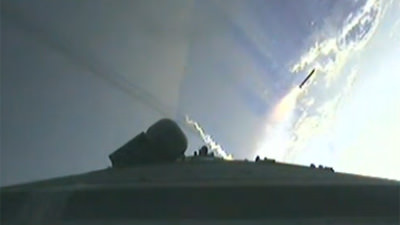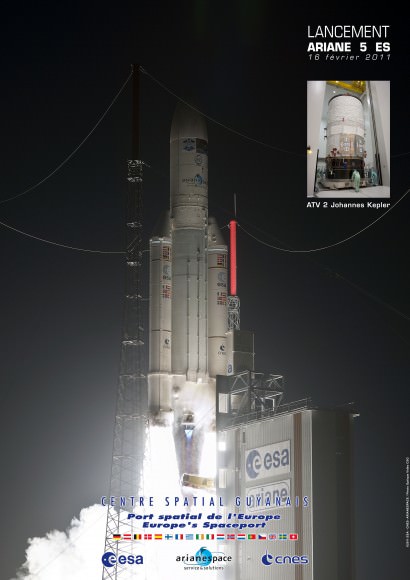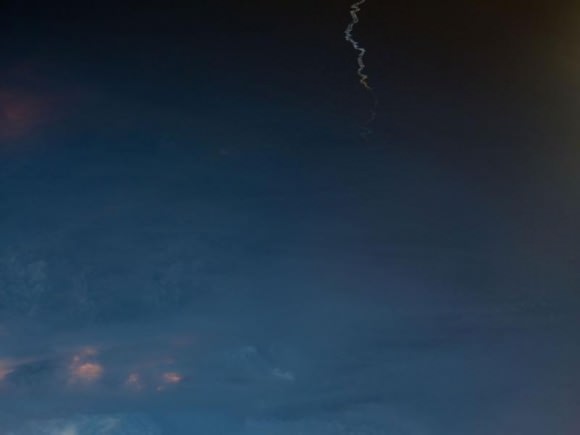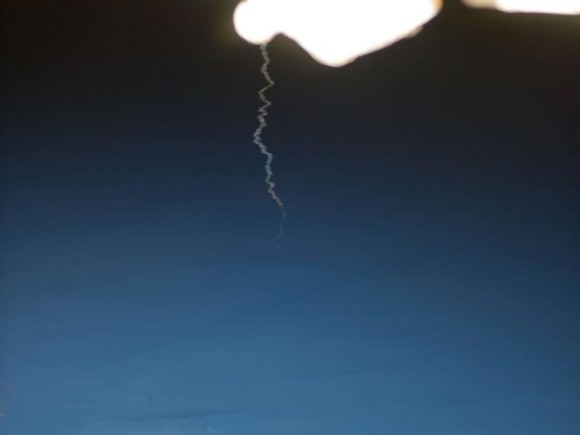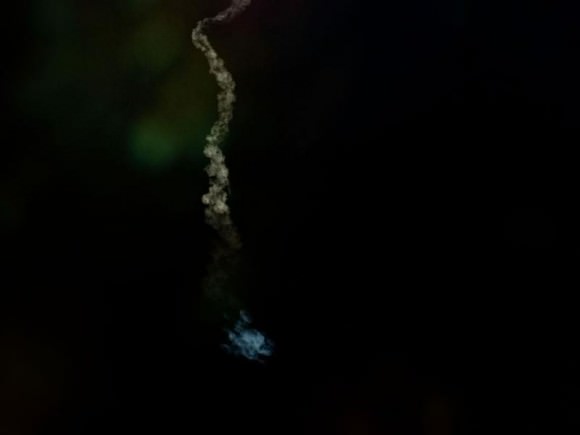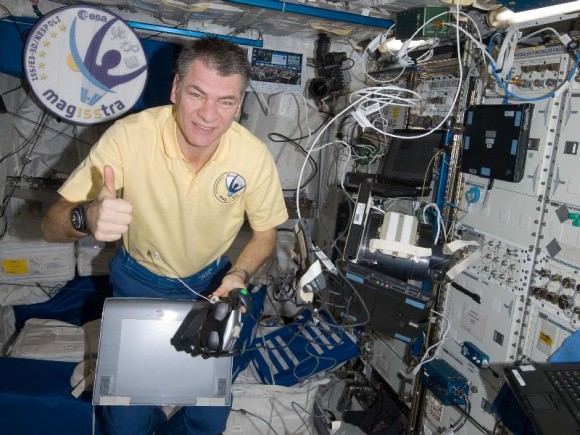[/caption]
A Delta IV rocket carrying a top secret military payload for the National Reconnaissance Office (NRO) blasted off Friday evening (March 11) at 6:38 p.m. from Cape Canaveral at Space Launch Complex-37 in Florida.
The NROL-27 payload supports the national defense and all information about its mission and goals is a classified military secret. Some outside observers say NROL-27 may be a powerful military communications satellite for relay of vital national security data rather than a signals intelligence satellite.
See our launch photo gallery below from Alan Walters and Ken Kremer
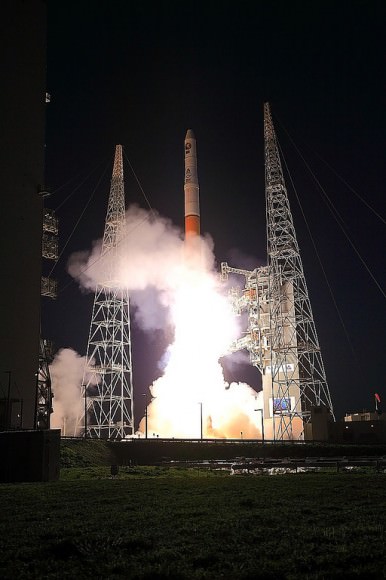
“This mission helps ensure that crucial NRO resources will continue to strengthen our national defense,” said Col James Ross, 45th Space Wing vice commander.
The sunset liftoff into a clear blue sky was visually stunning. With the winds whipping towards our viewing site along the NASA causeway, the roaring rocket thunder was especially loud. Upper level winds threatened to derail the launch. Liftoff was delayed by about 45 minutes due to strong wind gusts which finally calmed to fall within the launch criteria.
“This is the 50th anniversary year of the NRO. NROL-27 is the fifth of six launches for the NRO in the 2010-2011 time period and marks our most aggressive launch schedule in two decades,” said Loretta Desio, NRO spokesperson, in an interview for Universe Today at the viewing site.
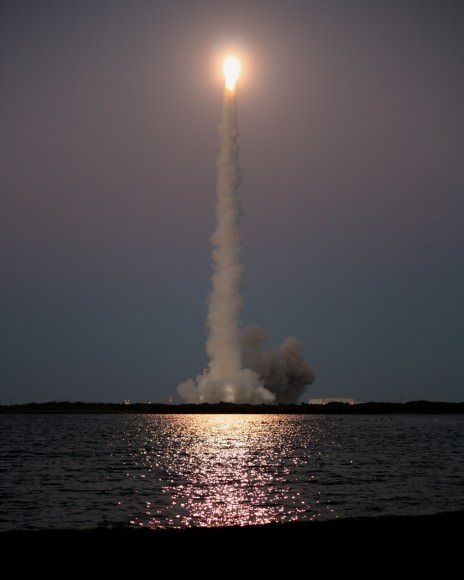
Colors and works in the logo represent the United States Marine Corps, United States Navy, VA Tech, and fallen veterans. Logo symbols represent the United States Air Force, United States Army and two teammates killed on 9/11,” according to ULA spokesperson Chris Chavez.
The unmanned Delta IV rocket was built by United Launch Alliance (ULA) and launched by the 45th Space Wing stationed at Patrick Air Force Base. ULA is a partnership between Lockheed Martin and Boeing.
 “The outstanding ULA, NRO and Air Force partnership made yet another successful mission,” said Lt. Col. William Heuck, 5th Space Launch Squadron commander.
“The outstanding ULA, NRO and Air Force partnership made yet another successful mission,” said Lt. Col. William Heuck, 5th Space Launch Squadron commander.
NROL-27 was bolted atop the Delta IV rocket in the Medium + (4,2) configuration with a single liquid fueled booster and two small side mounted solid rocket boosters. The Delta IV stands 62.5 meters (205 feet) tall and can launch payloads up to 13.5 tons into low-Earth orbit and 6.6 tons into toward the geosynchronous orbits used by communications satellites.
The flight entered a news blackout after the successful separation of the payload fairing at about four and one half minutes after blastoff. No further information about the satellite will be forthcoming. The 4 meter diameter composite nose cone protects the satellite during ascent through the Earth’s atmosphere.
“I am extremely proud of the entire government and contractor team who supported this launch, said Col. Alan Davis, Director of the Office of Space Launch in the National Reconnaissance Office.
The Delta IV launch occurred just six days after the Atlas V launch of the second Orbital Test Vehicle (OTV-2) — the mini space shuttle on another secret mission. See my Atlas report here.
The Florida Space Coast has seen a surge of rocket launchings in the past month. The Delta IV launch is the last of three successful liftoffs in the past few weeks and follows closely on the heels of the Atlas and the final flight of Space Shuttle Discovery.
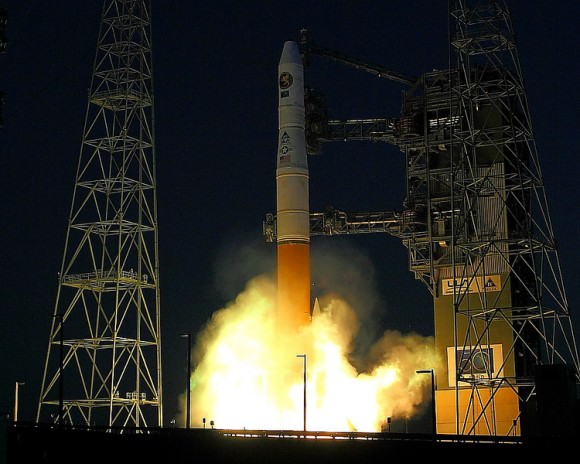
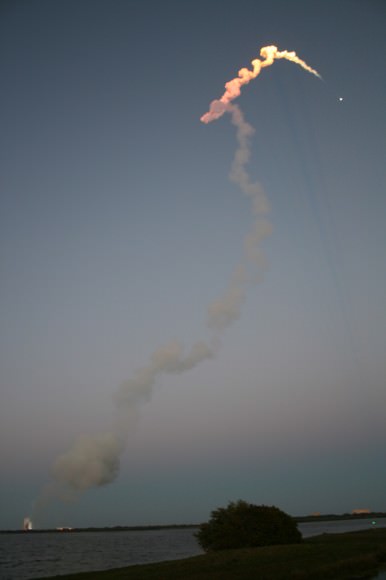
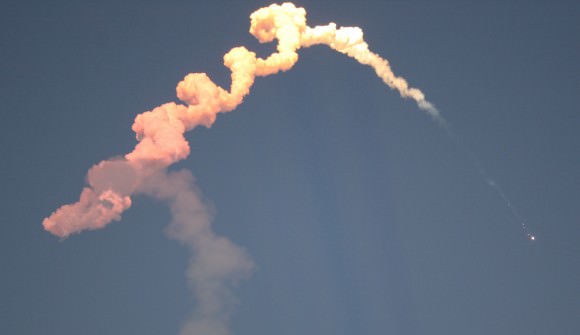
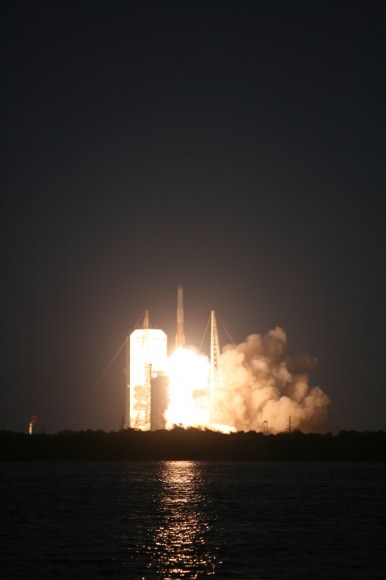
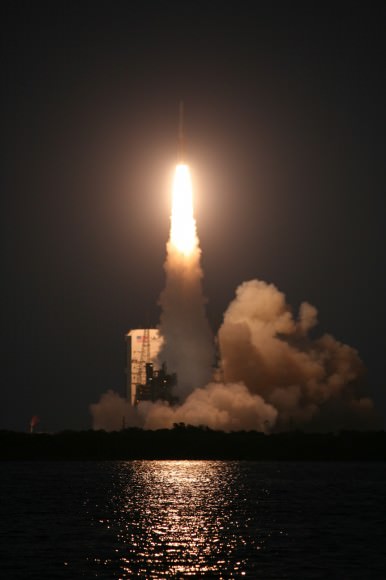
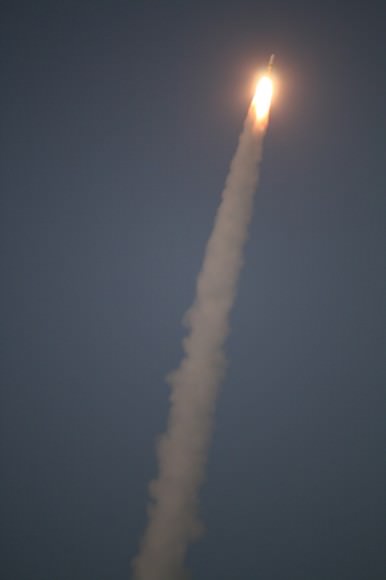
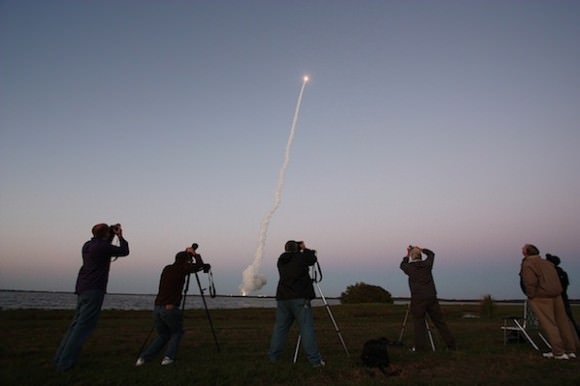
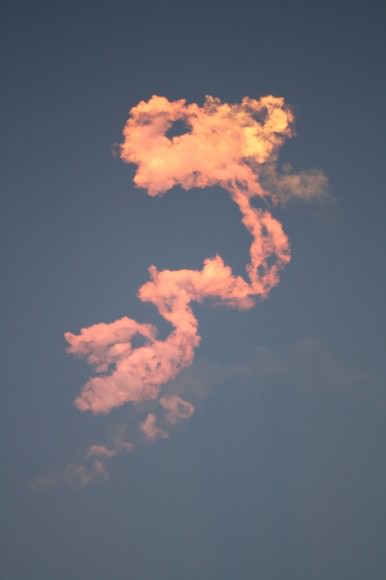
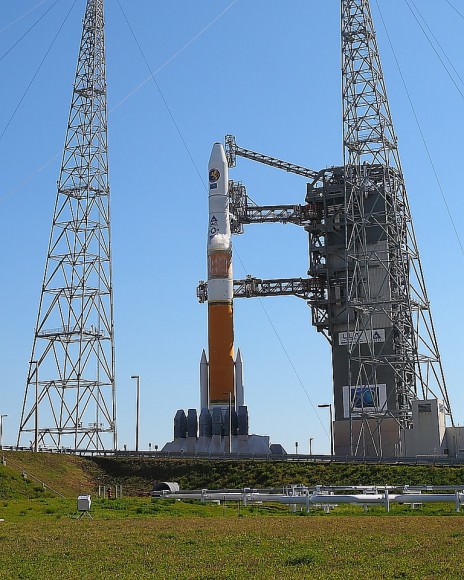
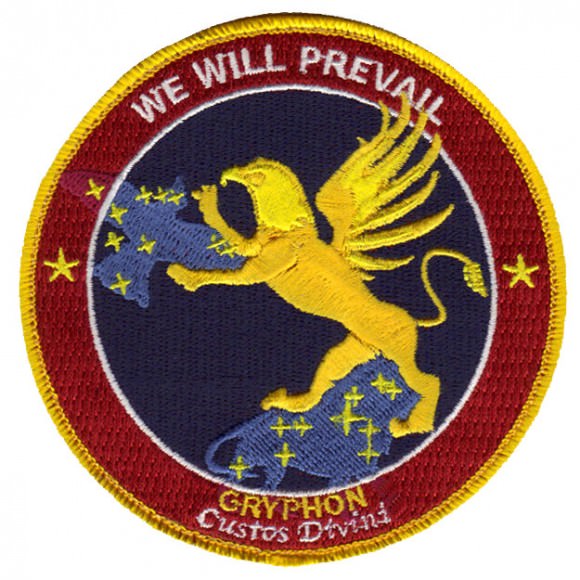
Gryphon logo: Colors and works represent the United States Marine Corps, United States Navy, VA Tech, and fallen veterans. Logo symbols represent the United States Air Force, United States Army and two teammates killed on 9/11.
The patch may contain hidden clues about the mission

